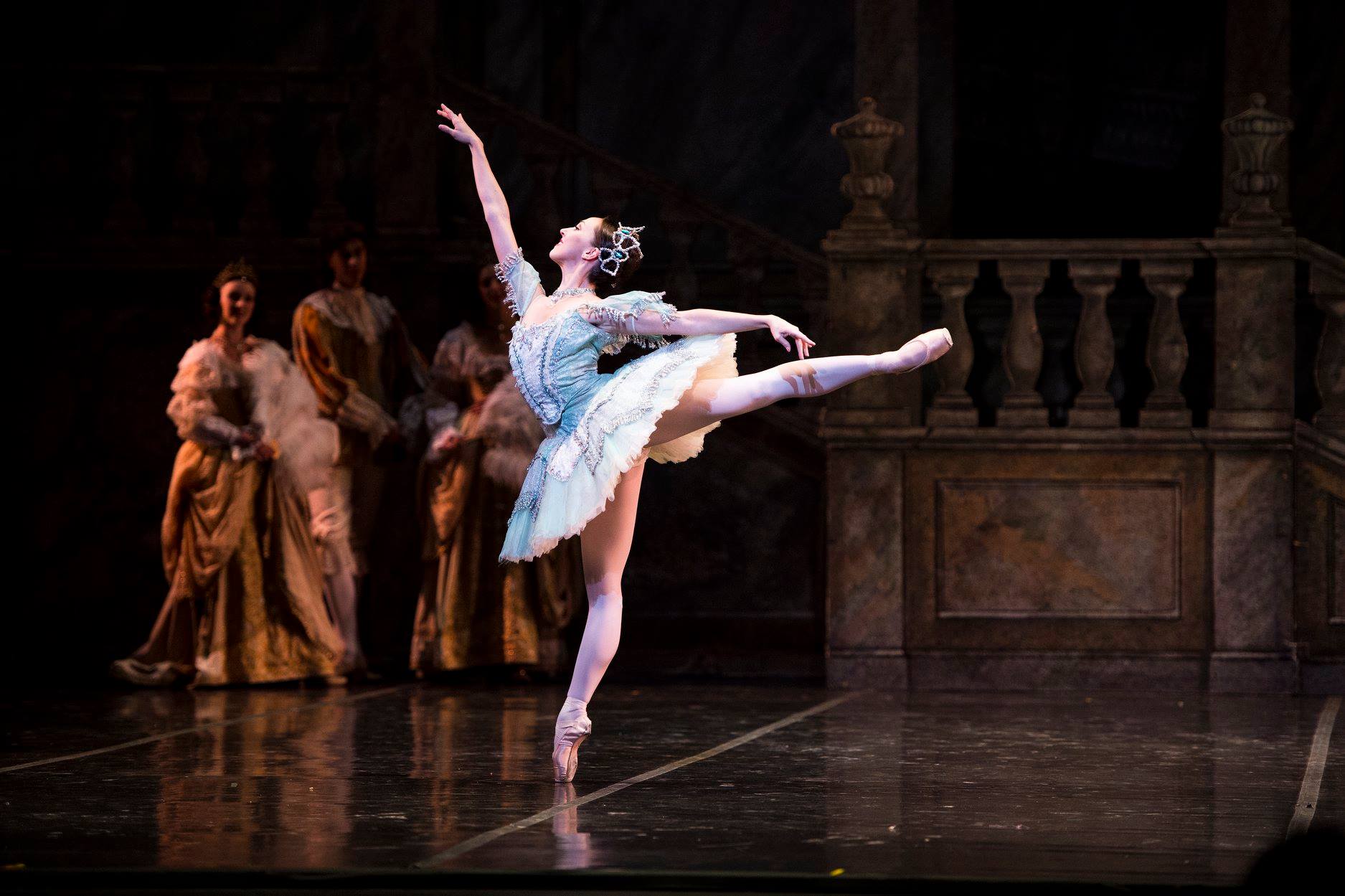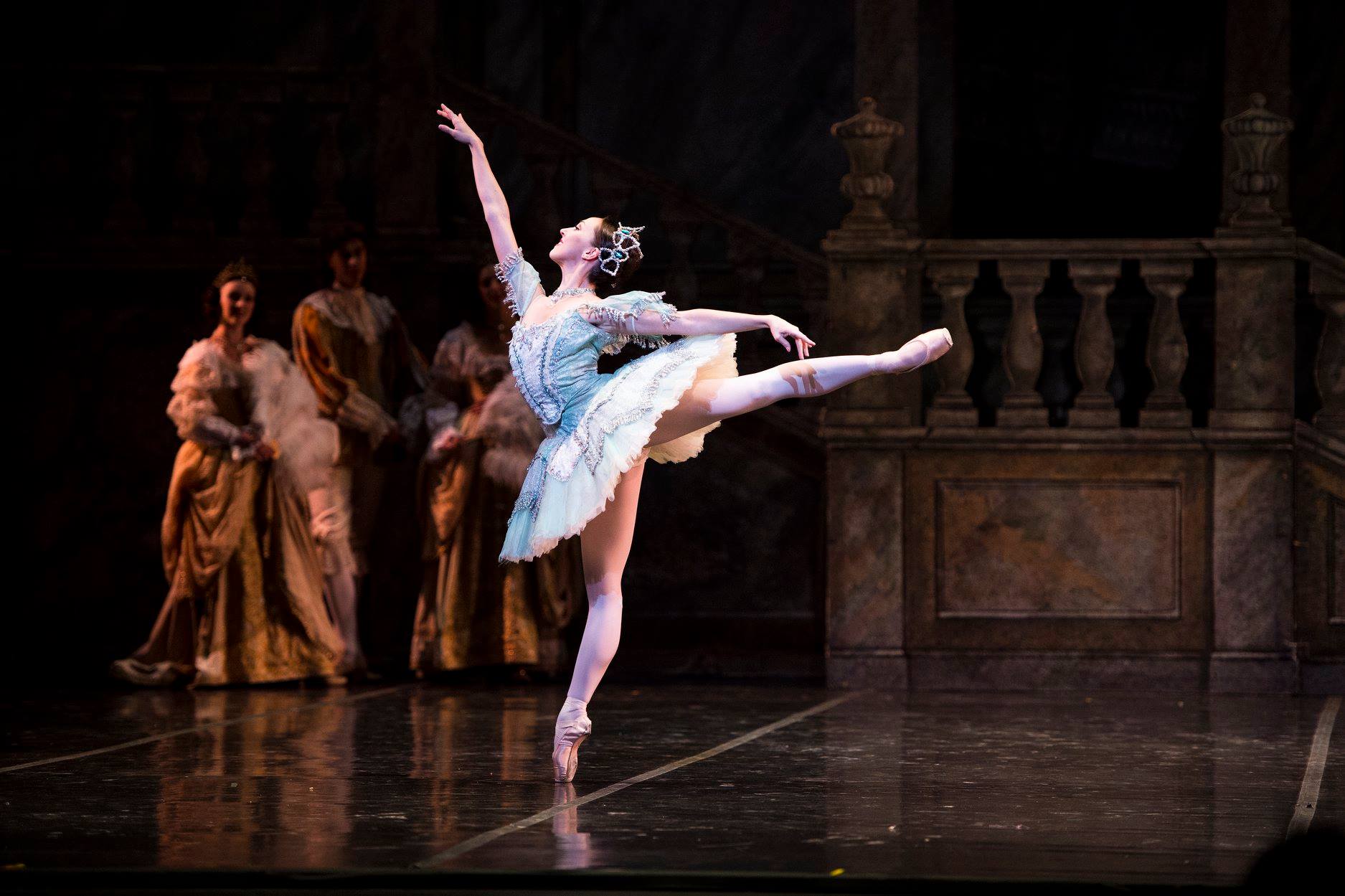On this week’s episode
- Dana Benton, a principle dancer at Colorado Ballet, shared her path to working in a ballet company and starring in lead roles.
- Immersing us in the dance world, Dana explained the structure, seasons, and work life of professional dancers.
- Dana describes her early interest in ballet and her training, starting at the age of nine, at a national ballet school.
About the show
You Have a Cool Job is a podcast hosted by Taylor Sienkiewicz from Peterson’s. The show highlights professionals who have a unique, interesting, uncommon, or otherwise cool job.
Our goal is to motivate you and show how interesting, fulfilling, and anything-but-average your career can be, and we’ll do this by talking with people who took a path less traveled. We ask these fascinating individuals how they got to where they are in their career based on their education, experience, and influences; why they love their job; and lots more.
Want more?
If you like what you’re hearing, check out these resources to get plugged in.
For more episodes of You Have a Cool Job, visit our YouTube channel. View other podcast blogs here.
Subscribe to receive an email containing each podcast episode of You Have a Cool Job as they’re released.
Learn more about Dana’s work at Colorado Ballet here.
Have a nomination for the show? Drop a line here.

Episode 3 Transcript
HOST SHOW INTRO: Hello and welcome. From Peterson’s, I’m Taylor Sienkiewicz and you’re listening to “You Have a Cool Job”, a podcast highlighting those who took their profession in a unique direction, and what they did to get there.
THEME MUSIC
HOST INTRO: On today’s episode of “You have a Cool Job”, we talk to Dana Benton, who’s a real-life ballerina, but her official title is principal dancer. To start things off, she explained what this title and other titles mean in the dance world.
DANA BENTON: Most companies, most classical ballet companies have ranks. So it starts off with, there’s a studio company which are like apprentices, they’re still a little bit in training so they’re doing a lot of the grunt work and then it goes up to a real apprentice and the cor de ballet which is the body of the company where most of the group dances happen are those people and then there’s soloists and then principals so principals are the top rank in most companies.
HOST: For everyone who dreamed of being Clara the first time they saw the nutcracker, Dana was one who made those dreams come true. She explained how this fits in to being a principal dancer along with her other job roles.
DANA BENTON: So as a principle we mainly focus on the principle roles and the principle roles are usually the main character of the ballet so right now we’re doing Sleeping Beauty so I’m playing Princess Aurora and then for Nutcracker we do Sugar Plum and Clara which are the main roles in Nutcracker and that’s kind of where we focus, where our staff focuses us are on the main roles.
HOST: And those main roles come with a territory. Dana’s day to day work life is filled with exercise and requires lots of physical stamina.
DANA BENTON: We start 9:30 in the morning with a ballet class which is our warm up for the day and it’s an hour and 15 minutes and then after ballet class we have rehearsal from 11-2 and then we have a lunch break from 2-3 and then we rehearse again from 3-6. So it’s a very long day, as a principle, we are usually not called to all those hours of rehearsal but there are some days where we are.
HOST: With such a long day, you might ask, what about breaks? It turns out that dancers like Dana work similarly to other athletes with a designated on and off season.
DANA BENTON: We have a season like any other sport like a football team or a baseball team we have our season which runs from the end of July to the beginning of April, and then from April through we start back again in July we are completely off so we take class ourselves we go to the gym, we take yoga, we do all these pilates to try to stay in shape over the layoff. But while we’re performing we rehearse for Sleeping Beauty for about 6-7 weeks and then we perform and we mainly just focus on that show. We rehearse still during the day then we perform at night and then after Sleeping Beauty’s over this time, and it changes every year, we have a week layoff so it’s really nice after such a hard run to have a little recoup time to let our muscles and our bodies kind of come back to one piece and rest a little bit and then right after that week off we start back again with rehearsals and then we’re going to be rehearsing for productions so we usually don’t have a lot of time off while we’re in season because our season is so short it’s only 34 weeks so we try and bang it all out in those 34 weeks and then we have our layoff period in the spring and summer.
HOST: In addition to these scheduling differences, Dana shared ways in which her job is unique to others.
DANA BENTON: We are being active all day and we’re not sitting in a desk and really just using our minds we’re using our minds and our body and also to be in front of an audience is quite different than a regular job because you have on some nights, 3,000 people stare at you do your job so it’s a little bit nerve wracking but that’s why we love it is we love to get out there and make a difference in someone’s evening when they come away from a show feeling inspired or happy or moved or whatever that’s kind of what makes our job different is we can affect other people emotionally.
HOST: And the physical nature of the job is not to be overlooked. When it comes to injuries, it’s important as part of a dancers job to take these seriously and manage pain.
DANA BENTON: For a normal person going to work with your back hurting or your feet hurting is not going to be an issue but when we go to work if we’re having some problem with our body, either we’re going to have to see physical therapy and not be able to dance that day and kind of take it easy or you’re going to have to figure out how to push through and manage the pain even for performances, I mean we always have something going on so it’s just about trying to manage that so for a regular person that’s not really a big deal unless you’re on your feet all day but for us it’s a pretty big deal something even like, for ladies a bruised toenail is painful because we’re on our toes all day. And, you’re basically in your sweats and dance clothes all day, I mean we never put on a suit only when we are performing we put on our costumes but we’re basically in sweats and we keep our bodies nice and warm all day so it’s ready to go and as soon as we start getting cold you have to warm up again and really keep your body moving to avoid injury so we’re in different types of work clothes I guess.
HOST: As you may expect, Dana started her career path very early in life. She explains how it all got started.
DANA BENTON: My mom actually danced a little bit recreationally and she put me and my sister in when I was about 3, my sister, she didn’t go in until later because she’s younger than me but put us into the dance and I just loved it and that was it. I wanted to do it full time and my mom took us to a performance by the National Ballet School which is the school I ended up training at in Toronto, Canada, and after the performance the school’s artistic director came out and spoke about the school and talked about being able to dance all day and train to be a ballerina and I was only 8 at the time and my mom said my eyes opened up like big saucers and I told her this is what I want to do I need to go here I need to audition for this ballet school and this is what I need to do so my mom did some research but I was still too young we had to be going into grade 5 so I needed to be like 9 years old so I had to wait one year to audition and then when I auditioned they accepted me, then you have a month long, it’s called summer school and it’s during the month of July and they audition you during the whole month to see if they want to keep you for the full year program and after that they accepted me for the full year program and then I stayed there from grade 5 through grade 12, graduated from the school, and got my first job as an apprentice with the Alberta Ballet in Calgary, Canada, and then after one season there I joined Colorado Ballet and now I’m in my 18th season with this company.
HOST: After so many years of dancing and knowing exactly what she wanted to do, I was curious about what kept Dana motivated and inspired to keep going. I asked about her biggest influences and role models that came into play along her path as a dancer.
DANA BENTON: Definitely the school, it’s an amazing school and it really prepares you for the outside world as a ballerina, being in a company and those kinds of different pressures. I had some really great teachers that helped me even throughout my dance career I’m still in touch with a few of my teachers and I’m still in touch with the director of my school and I go back every now and then because it’s near my hometown so I go back and visit the school and I also teach here so I’ve sent a couple of my students to go audition for the school who have stayed for a couple years there as well so I always keep that connection but my teachers there were a big influence on me and also being so close to the company in Toronto, the National Ballet of Canada, I was able to watch professionals regularly which was also inspiring and influential for me and then as I got into my professional life, when we have guest artists come or guest choreographers come to create new works on the company there’s been a few that have become really like a mentor to me and taken me under their wing and supported me and now we have like a friendship as well as a professional relationship so there’s been a lot of people throughout my career that have helped me get to where I am today.
HOST: Dana’s parents were and continue to be hugely supportive throughout her career, especially seeing as it started at age 9.
DANA BENTON: I mean it was really hard for them. Even though the school was close to my hometown I still had to live in a residence so I lived away from my parents starting at the age of 9 and I would only get to go home on the weekends to visit my parents so that was hard more for them than it was for me because it was like woah so much fun I’m getting to do what I want to do and get the academics as well as the ballet but it was hard for them to drop me off every week and leave me there but they were both so supportive and they still are supportive. They come to all my major shows that they can make it to and they were just here for Sleeping Beauty, which was amazing.
HOST: When it comes to following your dreams, Dana is quite the role model. She shared advice she would give other aspiring dancers.
DANA BENTON: I would just tell them to never give up. There was one point at the ballet school where they…I’m only 5’1” and they said that I was pretty small and it might be very difficult for me to get a job. But I was determined to get a job and I didn’t give up or let that affect my drive so whatever your teachers are telling you there’s always a different way of getting to your dreams and to never give up and just keep focused on what you want.
HOST: Dana’s job as a principal dancer is anything but ordinary. The work is physical, performance-based, and rewarding. Even if your goal isn’t necessarily to become a ballerina, we hope you’re inspired by Dana’s story and want you to find what it is that is rewarding to you. Thanks for tuning in, we’ll see you next week.
THEME MUSIC



